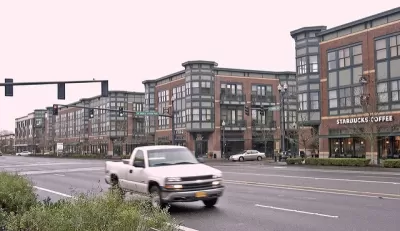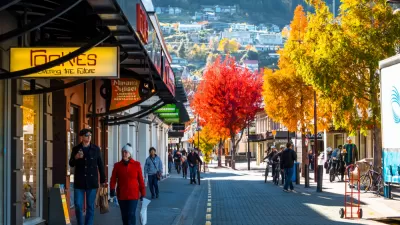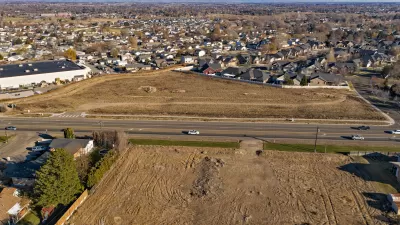The practice of limiting high-density development to busy arterial streets puts renters and low-income households at higher risk for the effects of air and noise pollution created on major roads.

Henry Grabar argues that policies that encourage higher-density development only on busy streets and commercial corridors amounts to discrimination against renters that perpetuates inequality. As Grabar puts it,
Unfortunately, big streets are not nice places to live. Their traffic is noisy, dirty, and dangerous. Allowing apartment buildings to be built at all is progress, but ensuring they rise only in the worst locations is not fair to the people who live in them.
The practice elicits less resistance from neighborhood groups that want to maintain single-family zoning, notes Grabar, "[b]ut that doesn’t mean it’s a good idea." While it's logical to build housing near transit, side streets in the same areas could also be upzoned to accommodate more housing. "Many critics have rightly pointed out, in recent years, that zoning in residential neighborhoods seems a lot more concerned with types of neighbors than with the supposedly hazardous consequences of their arrival." Meanwhile, planners concerned about additional traffic from high-rise buildings naturally lean toward placing them on busier roads, compounding the problem.
In an October article, Daniel Oleksiuk made a similar argument, calling for Vancouver to stop relegating multi-family dwellings to busy arterials and effectively turning renters into a 'buffer' for the pollution caused by crowded urban streets. According to Oleksiuk, while some people may choose to live on busy thoroughfares for the convenience, renter households should not be forced to suffer the brunt of urban pollution and public health hazards.
FULL STORY: Upzone the Side Streets!

Maui's Vacation Rental Debate Turns Ugly
Verbal attacks, misinformation campaigns and fistfights plague a high-stakes debate to convert thousands of vacation rentals into long-term housing.

Planetizen Federal Action Tracker
A weekly monitor of how Trump’s orders and actions are impacting planners and planning in America.

In Urban Planning, AI Prompting Could be the New Design Thinking
Creativity has long been key to great urban design. What if we see AI as our new creative partner?

How Trump's HUD Budget Proposal Would Harm Homelessness Response
Experts say the change to the HUD budget would make it more difficult to identify people who are homeless and connect them with services, and to prevent homelessness.

The Vast Potential of the Right-of-Way
One writer argues that the space between two building faces is the most important element of the built environment.

Florida Seniors Face Rising Homelessness Risk
High housing costs are pushing more seniors, many of them on a fixed income, into homelessness.
Urban Design for Planners 1: Software Tools
This six-course series explores essential urban design concepts using open source software and equips planners with the tools they need to participate fully in the urban design process.
Planning for Universal Design
Learn the tools for implementing Universal Design in planning regulations.
Gallatin County Department of Planning & Community Development
Heyer Gruel & Associates PA
JM Goldson LLC
Mpact (founded as Rail~Volution)
City of Camden Redevelopment Agency
City of Astoria
Jefferson Parish Government
Camden Redevelopment Agency
City of Claremont





























